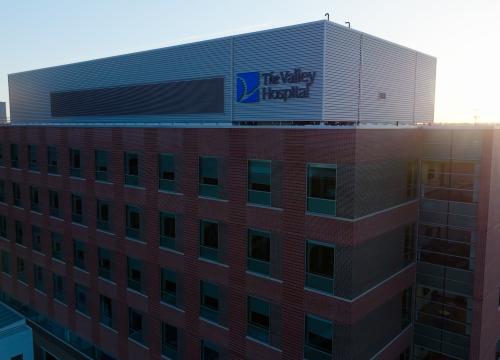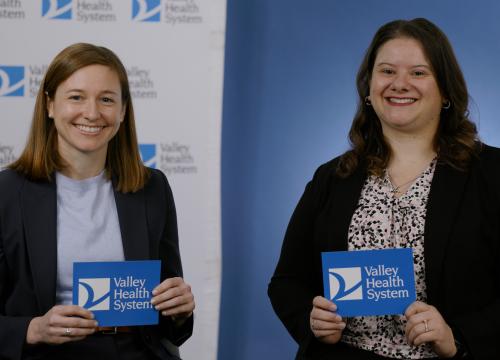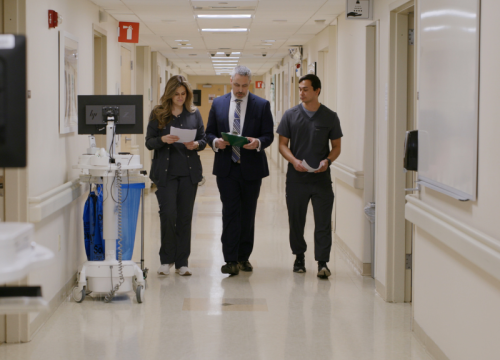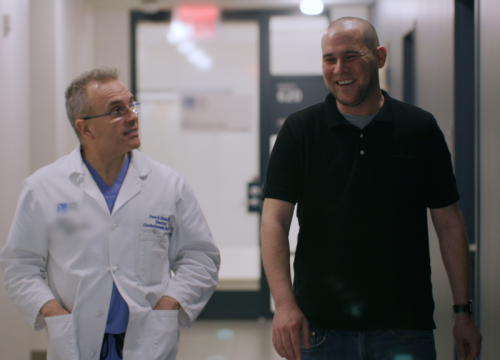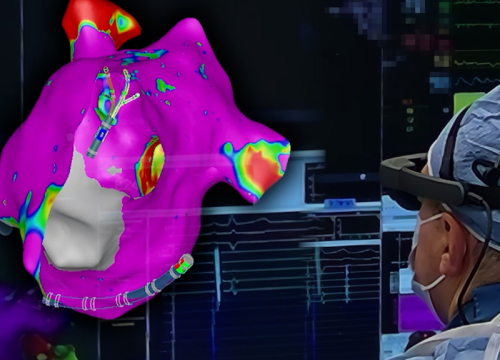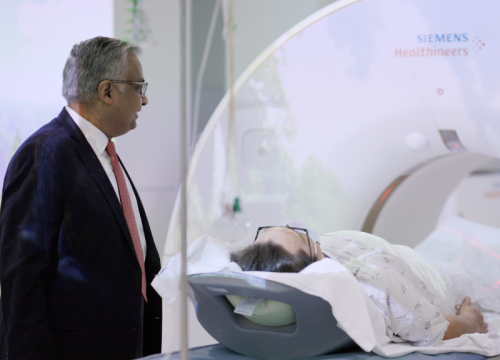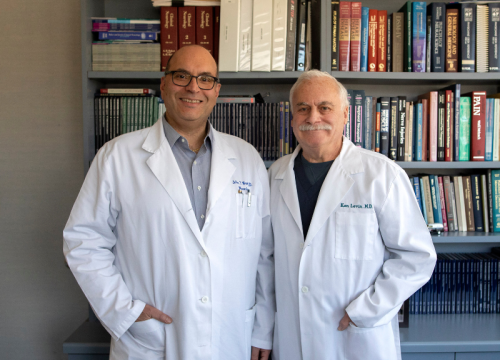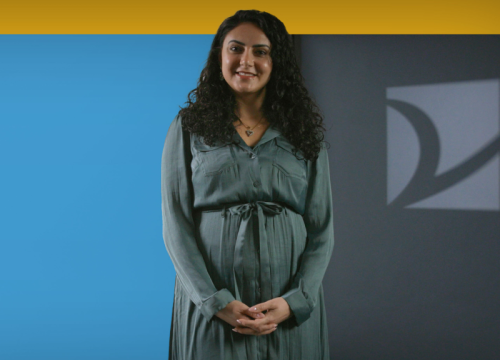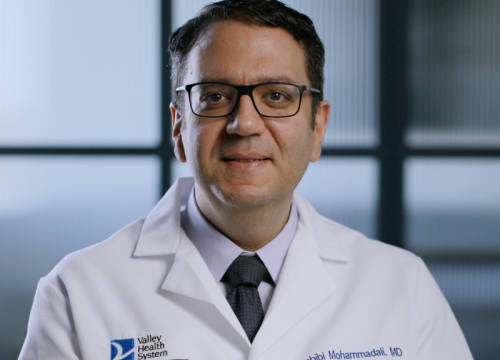If you have a spine condition that makes it hard to get through the day, it may be time to our Center of Neurosciences.
Valley neurosurgeons specialize in treating spine conditions with a number of minimally invasive techniques. These minimally invasive procedures can help you feel better and get back to activity sooner.
Whether your symptoms are caused by a herniated disc or spinal stenosis, you’ll find the care and support you need at Valley. Our spine surgeons have helped countless people achieve long-term relief — and improve their quality of life.
WATCH: Learn how Valley neurosurgeons incorporate minimally invasive techniques to treat a wide range of spine conditions, from herniated discs to spine tumors.
When to Get Help for Back Pain
You should consider scheduling an evaluation with a neurosurgeon if:
- You have neck or back pain that radiates down your arms or legs
- Your neck or back pain is accompanied by numbness, tingling, or weakness
- Your symptoms interfere with your ability to work, play, or sleep
- Conservative therapies prescribed by your primary care physician don’t help your pain go away
The Valley Approach to Spine Surgery
Even though our neurosurgeons routinely perform spine surgery, they only recommend an operation as a last resort.
They start by considering nonsurgical options, working closely with other specialists, like pain management experts and physical medicine and rehabilitation providers. This approach may include therapies such as:
- Physical therapy
- Prescription medication
- Steroid injections
- Nerve blocks
And if it turns out that surgery is your best option, our neurosurgeons are here for you. They offer a wide range of surgical options and have experience treating even the most complex spine conditions. They are also on the leading edge of minimally invasive spine surgery.
Surgery for Spine Conditions at Valley
Our neurosurgeons specialize in minimally invasive spine surgery, as well as traditional open surgery if needed. We’ve found that about 80% of patients are good candidates for minimally invasive surgery. And if you do need open surgery, our goal is to take the least invasive approach possible.
At Valley, our spine surgeons work with you to choose the right treatment for your medical needs and personal goals.
Our areas of expertise include:
- Discectomy and microdiscectomy: Your surgeon removes part of a herniated disc to relieve pressure on your nerves.
- Laminotomy and foraminotomy: Your surgeon widens one or more of the small channels found between each vertebra (intervertebral foramen) that your nerves pass through.
- Laminectomy: Your surgeon removes most (or all) of the back side of a vertebra. This widens the main spinal canal, reducing pressure on your spinal cord and nerves.
- Spinal fusion: Your surgeon joins together two or more vertebrae to create a single bone that’s much more stable.
- Anterior cervical discectomy and fusion: After making an incision in the front of your neck, your surgeon removes a damaged disc to relieve pressure on your spinal cord and nerves. Then they perform a spinal fusion to join the bones surrounding the disc that was removed.
- Artificial disc replacement: Your surgeon removes a damaged or diseased disc and replaces it with an artificial one that replicates normal motion.
- Vertebroplasty: Your surgeon injects bone cement directly into a cracked or damaged vertebra.
- Kyphoplasty: Your surgeon inserts a special balloon inside a compressed, fractured vertebra. The balloon is then inflated, raising the vertebra to its normal height. This also creates space that your surgeon fills with bone cement.
- Chiari decompression: Using a lighted retractor system, your surgeon makes a small (about one inch) incision to remove excess tissue that causes compression of the brain stem or spinal cord and blocking normal fluid flow.
In some cases, we perform multiple procedures at the same time. For example, some patients require both a laminectomy and spinal fusion.
Minimally Invasive Spine Surgery
In the past, spine surgery required large incisions and long hospital stays. Today, advanced technology and techniques have made most spine surgeries much less invasive.
Valley neurosurgeons specialize in minimally invasive spine surgery. They use a combination of advanced imaging technology and innovative tools (tubular retractors) to access your spine through small incisions. They also use state-of-the-art monitoring systems to reduce the risk for pain, bleeding and infection.
These minimally invasive approaches offer a wide range of benefits, including:
- Shorter surgery time, which means less time under anesthesia
- Less bleeding
- Less pain after surgery, which means a lower likelihood of needing strong pain medications
- Faster recovery, allowing you to return to work and activity sooner
Conditions Treated
- Bulging Disc
- Cauda Equina
- Cervical Instability
- Cervical Spondylotic Myelopathy
- Chiari Malformation
- Compression Fractures
- Degenerative Disc Disease
- Foraminal Stenosis
- Herniated disc
- Myelopathy (Spinal Cord Dysfunction)
- Radiculopathy (Pinched Nerve)
- Sciatica
- Scoliosis
- Slipped Disc
- Spinal Cord Compression
- Spinal Cord and Nerve Tumors
- Spinal Metastases
- Spinal Stenosis (Cervical and Lumbar)
- Spine Tumors
- Spondylolisthesis
- Spondylosis
- Tethered Cord Syndrome
Why Choose Valley for Spine Surgery?
- Minimally invasive spine surgery: Whenever possible, our spine surgeons use the latest minimally invasive spine surgery techniques. This approach helps you recover more quickly and with less pain after surgery. For example, we may use special tools (retractors) that let us access your spine by separating your muscles instead of cutting through them or detaching them from the bone.
- A team-based approach: Our spine surgeons coordinate your care with nonsurgical specialists, giving you access to the full range of nonsurgical treatment options. When you do need surgery, our spine surgeons typically perform spine surgery in pairs. That means you’ll have two surgeons in the operating room instead of just one. Because spine surgery is so complex, having a second surgeon helps ensure your operation is safe and successful while decreasing operative times.
- Planning your surgery: Before your surgery, we use the latest imaging technologies to plan the ideal surgical approach. This often results in shorter surgeries and less time under anesthesia. And by visually analyzing your spine and surrounding anatomy ahead of time, we’re less likely to run into unexpected challenges during surgery.
- Support after surgery: At Valley, your care and support doesn’t end when you leave the operating room. If you need to stay in the hospital after surgery, our pain management specialists, physical therapists and social workers will work together to minimize your length of stay. Once you’re discharged from the hospital, you’ll have access to outstanding home care and outpatient rehabilitation. You’ll also have follow-up visits with your surgeon until we’re confident you’ve made a complete recovery.




